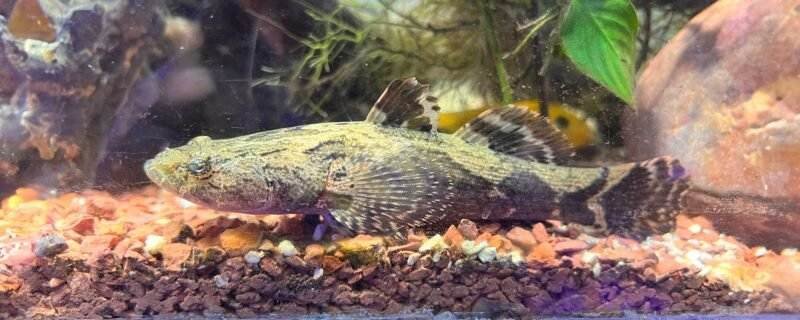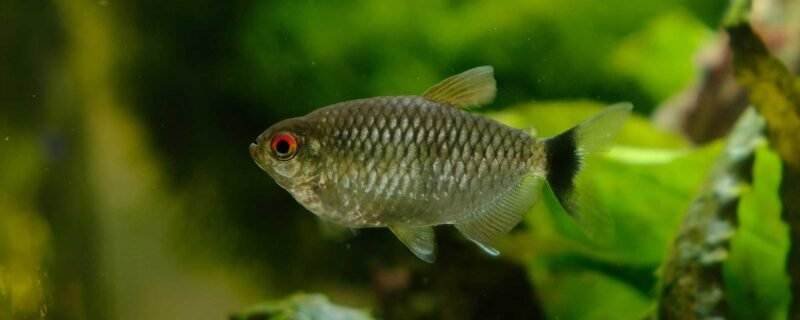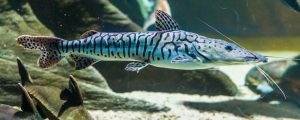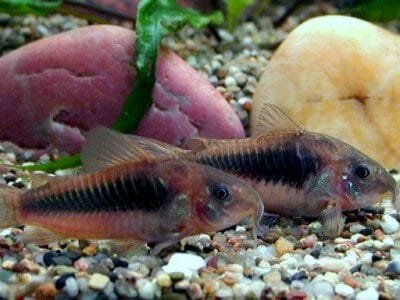The Peacock Gudgeon (Tateurndina ocellicauda), also known as the Peacock Goby, is a small, vibrantly colored freshwater fish native to Papua New Guinea. Beloved for its dazzling blue and yellow hues, red spotting, and peaceful nature, this species has become a favorite among aquarists seeking to add beauty and personality to their tanks. Despite its exotic appearance, the Peacock Gudgeon is surprisingly hardy and easy to care for, making it suitable for both beginner and experienced fishkeepers.
Native Habitat
In the wild, the Peacock Gudgeon inhabits the clear, slow-moving streams and backwaters of eastern Papua New Guinea. These environments are typically shaded and filled with dense aquatic vegetation, providing plenty of cover and natural spawning sites. The water is soft to moderately hard, slightly acidic to neutral, and maintained at tropical temperatures. Understanding its native conditions helps aquarists replicate a comfortable and healthy aquarium environment for this species.
Physical Characteristics and Size
Peacock Gudgeons are small, typically reaching 2.5 to 3 inches (6–7.5 cm) in length when fully grown. Males tend to be slightly larger and more vibrantly colored than females, often displaying extended dorsal and anal fins. Their bodies shimmer with iridescent blue, accented by golden and pink tones and bright red spots along the flanks. A distinct black spot outlined in yellow on the caudal fin gives the fish its Latin name, ocellicauda, meaning “eye tail.”
Diet and Feeding
In nature, these fish are micropredators, feeding on small invertebrates, insect larvae, and zooplankton. In captivity, they adapt well to a diet of high-quality flakes or micro pellets, supplemented with live or frozen foods such as daphnia, bloodworms, and brine shrimp. Regular feeding of protein-rich foods will help maintain their bright coloration and overall health. Feeding should occur once or twice a day in small amounts that can be consumed within a few minutes. For more guidance on proper nutrition, check out our comprehensive Aquarium Fish Feeding Guide.
Sexing Peacock Gudgeons
Sexing Peacock Gudgeons is relatively straightforward. Males exhibit more intense coloration, particularly on the head and fins, and have a distinctive forehead hump as they mature. Females are smaller, rounder in the belly, and less intensely colored, with a prominent black line along the mid-body and a yellow tint on the belly, especially when ready to spawn.
Breeding and Spawning Behavior
Breeding Peacock Gudgeons in captivity is quite achievable. They are cave spawners, preferring small crevices, pieces of PVC pipe, or hollow decorations where females can deposit eggs. Males guard the eggs until they hatch, fanning them with their fins to ensure proper oxygenation. After hatching (usually within 7–10 days), the fry should be fed infusoria or newly hatched brine shrimp. Providing a densely planted tank and calm surroundings will increase breeding success.
Ideal Tank Setup and Water Conditions
Peacock Gudgeons thrive in well-maintained freshwater aquariums of at least 15–20 gallons. Their natural habitat can be replicated using fine gravel or sand substrates, live plants, driftwood, and caves for hiding and breeding. Gentle filtration and moderate lighting are ideal. The water should be kept within these parameters:
- Temperature: 73–79°F (23–26°C)
- pH: 6.0–7.5
- Hardness: 5–12 dGH
Regular maintenance and partial water changes help preserve water quality. To learn more about maintaining stable conditions, visit Aquarium Water Chemistry Basics.
Community Compatibility
The Peacock Gudgeon is an excellent community fish due to its peaceful temperament. It coexists well with small, non-aggressive species such as Neon Tetras, Harlequin Rasboras, and Corydoras Catfish. Avoid keeping them with fin-nipping or overly boisterous tankmates. Males can occasionally display territorial behavior during spawning, but serious aggression is rare in well-structured tanks with adequate hiding spaces.
Ease of Care
Peacock Gudgeons are generally considered easy to moderate in terms of care. They tolerate a range of water conditions and adapt well to captive diets. However, maintaining pristine water and avoiding overstocking are essential to keeping them healthy. They are sensitive to poor water quality, so consistent filtration and routine maintenance are crucial. For new aquarists setting up their first aquarium, refer to our Step-by-Step Beginner Aquarium Setup Guide for best practices.
Tankmates That Get Along Well
Because of their gentle disposition, ideal companions include other peaceful community fish. Suitable tankmates are:
- Small Tetras (Neon, Glowlight, Rummy-nose)
- Rasboras
- Small Livebearers (Platies, Guppies)
- Peaceful bottom dwellers like Bristlenose Catfish
- Dwarf Gouramis or Honey Gouramis (with caution to avoid territory overlap)
Providing plenty of cover ensures that all fish can establish their own territory peacefully.
Species Variations and Albino Form
The standard coloration of the Peacock Gudgeon is already breathtaking, but some aquarists may encounter color morphs selectively bred for enhanced hues. Albino versions, while rare, exhibit lighter, pastel tones with pale pink or white body coloration and faint red spotting. These albino forms share the same care requirements as standard varieties but may be slightly more sensitive to bright lighting.
Similar and Related Species
Although often mistaken for gobies due to their body shape, Peacock Gudgeons belong to the family Eleotridae. Related freshwater species, such as the Bigmouth Sleeper Goby, share similar lineage but differ greatly in size and temperament. Among smaller relatives, Peacock Gudgeons stand out for their beauty and adaptability in home aquariums.
FAQs
How many Peacock Gudgeons can I keep together?
A small group of 4–6 individuals works well in a 20-gallon tank. Keeping them in pairs or small groups encourages natural behaviors and reduces stress.
Do Peacock Gudgeons need live plants?
While not strictly required, live plants greatly enhance their well-being. Plants provide hiding spaces, oxygenation, and surfaces for spawning. Hardy plants such as Java Fern or Anubias are ideal.
How long do Peacock Gudgeons live?
With proper care, these fish typically live for 4–5 years in captivity, though excellent maintenance and a balanced diet can extend their lifespan.
Conclusion
The Peacock Gudgeon (Tateurndina ocellicauda) is a dazzling addition to any freshwater aquarium. Combining vibrant coloration, gentle behavior, and ease of care, it appeals to aquarists of all levels. By replicating their natural environment, offering a varied diet, and maintaining stable water parameters, hobbyists can enjoy the charm and beauty of this remarkable species for years to come.






